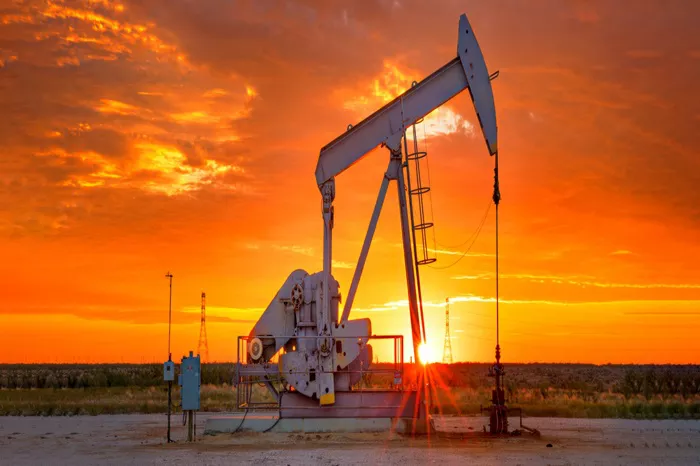Oil is a vital component of modern society. It’s used in various industries and forms the backbone of transportation, manufacturing, and energy production. But what exactly is oil made out of fossil fuels? This article will delve into the origins, formation, and composition of oil, shedding light on its significance and usage.
The Origins of Fossil Fuels
Fossil fuels are energy sources formed from the remains of ancient plants and animals. Millions of years ago, these organisms died and were buried under layers of sediment. Over time, heat and pressure transformed these remains into coal, oil, and natural gas. The term “fossil fuel” is derived from the process of fossilization, where organic material is converted into hydrocarbons.
Formation of Oil
Oil formation begins with the accumulation of organic material in sedimentary basins. These basins are often found in shallow seas, lakes, and river deltas where large amounts of plant and animal matter accumulate. Over time, this organic material gets buried under layers of sediment.
As more sediment accumulates, the pressure and temperature increase. At depths of about 7,500 to 15,000 feet, and temperatures between 150 to 300 degrees Fahrenheit, the organic material undergoes chemical reactions. These reactions break down complex molecules into simpler hydrocarbons, forming a substance known as kerogen.
With further burial and increased temperatures, typically between 150 and 300 degrees Celsius, the kerogen is transformed into liquid hydrocarbons, or crude oil. This process is known as catagenesis. The oil then migrates through porous rock formations until it becomes trapped in reservoirs.
Composition of Crude Oil
Crude oil is a complex mixture of hydrocarbons and other organic compounds. Its composition can vary significantly depending on its source. However, the primary components of crude oil include:
Alkanes (Paraffins): These are saturated hydrocarbons with a general formula of CnH2n+2. They are the simplest type of hydrocarbon and are typically found in straight or branched chains. Examples include methane, ethane, and propane.
Cycloalkanes (Naphthenes): These saturated hydrocarbons contain one or more rings of carbon atoms. Cyclohexane and methylcyclohexane are common examples.
Aromatics: These are unsaturated hydrocarbons that contain one or more aromatic rings. Benzene, toluene, and xylene are common aromatic compounds found in crude oil.
Asphaltenes and Resins: These are complex, high-molecular-weight compounds that include a mix of hydrocarbons, sulfur, nitrogen, and oxygen. They are responsible for the heavy, viscous nature of some crude oils.
Sulfur Compounds: Crude oil often contains sulfur in various forms, such as hydrogen sulfide (H2S), mercaptans, and thiophenes. The sulfur content can vary widely, affecting the refining process and the quality of the final products.
Nitrogen Compounds: These are present in smaller quantities and can include pyridines and quinolines. Nitrogen compounds can affect the stability and quality of refined products.
Oxygen Compounds: These can include carboxylic acids, phenols, and ketones. The oxygen content in crude oil is generally low but can influence the refining process.
See also: 10 Uses Of Oil Fossil Fuel
Refining Crude Oil
Crude oil needs to be refined before it can be used. The refining process separates the complex mixture of hydrocarbons into useful products such as gasoline, diesel, jet fuel, heating oil, and lubricants. The primary steps in refining include:
Distillation: Crude oil is heated in a distillation column. Different hydrocarbons boil at different temperatures, allowing them to be separated based on their boiling points. The lighter fractions, such as gasoline and diesel, rise to the top, while heavier fractions, like lubricating oils and asphalt, remain at the bottom.
Cracking: This process breaks down large hydrocarbon molecules into smaller, more useful ones. There are several types of cracking, including thermal cracking, catalytic cracking, and hydrocracking.
Reforming: This process restructures hydrocarbons to improve their quality. For example, naphtha can be reformed into high-octane gasoline components.
Treating and Blending: Various treatments remove impurities such as sulfur, nitrogen, and oxygen compounds. The treated hydrocarbons are then blended to create specific products with desired properties.
Environmental Impact of Oil Production
The extraction and use of oil have significant environmental impacts. Drilling for oil can lead to habitat destruction, water contamination, and oil spills. Burning oil products releases greenhouse gases, contributing to climate change. Therefore, there is a growing emphasis on reducing dependency on fossil fuels and transitioning to renewable energy sources.
Alternative Energy Sources
To mitigate the environmental impact of fossil fuels, researchers and industries are exploring alternative energy sources. These include:
Solar Power: Harnessing energy from the sun using photovoltaic cells or solar thermal systems.
Wind Power: Generating electricity using wind turbines.
Hydropower: Using the energy of flowing water to produce electricity.
Bioenergy: Producing energy from organic materials such as plants, agricultural waste, and algae.
Geothermal Energy: Harnessing heat from the Earth’s interior to generate electricity and provide heating.
Conclusion
Oil, a fossil fuel, is a complex mixture of hydrocarbons formed from ancient organic material subjected to heat and pressure over millions of years. Its extraction, refining, and use have significant environmental impacts, prompting the search for sustainable energy alternatives. Understanding the composition and formation of oil is crucial for developing strategies to reduce its environmental footprint and transition to a more sustainable energy future.
By exploring the origins and composition of oil, we gain insights into the processes that have shaped our energy landscape. This knowledge is essential for making informed decisions about energy production, consumption, and environmental stewardship. As we move towards a more sustainable future, understanding the intricacies of fossil fuels will help us navigate the challenges and opportunities that lie ahead.
Related topics:
Human Progress And Fossil Fuels
100% Renewable Superethanol-E85: A Promising Alternative To Fossil Fuels
The Evolving Perception Of Fossil Fuel Workers In The Climate Era

